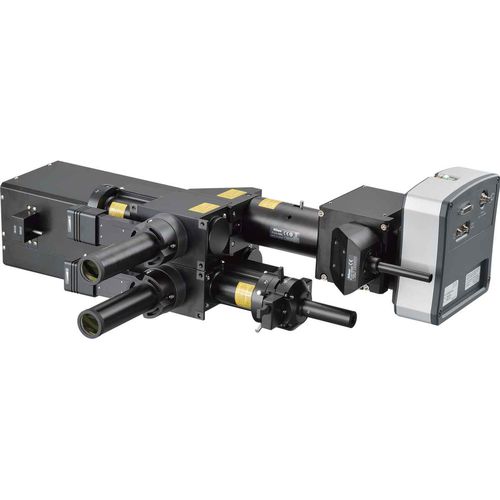
- Laboratory
- Laboratory medicine
- Microscope light source
- Nikon Instruments

- Products
- Catalogs
- News & Trends
- Exhibitions
Microscope light source Ti2-LAPPlaserfluorescent
Add to favorites
Compare this product
Characteristics
- Applications
- for microscopes
- Light source
- laser, fluorescent
Description
Modular illumination system with ultimate flexibility and expandability.
The Nikon Ti2-LAPP system provides modular illuminators for total internal reflection fluorescence (TIRF), photoactivation/conversion, photobleaching, epi-fluorescence, as well as super-resolution microscopy (N-STORM). Each module can be flexibly combined to build microscope systems that are optimized for individual research needs. For example, multiple TIRF modules can be incorporated into a single microscope for anisotropy experiments and fast, multi-angle TIRF imaging. Combined with the Ti2’s stratum structure, up to five illumination modules can be incorporated into a single microscope (e.g. two TIRFs, a FRAP, a DMD, and an Epi-FL module can all be integrated into one Ti2).
Key Features
Fully automated H-TIRF module
Fully automated TIRF adjustment and observation is now possible
The ideal incident angle and focus of the laser for TIRF observation vary depending on specimen and observation conditions. Adjusting the incident angle and focus for achieving TIRF requires skill and experience. The H-TIRF module automatically adjusts the focus and incident angle of the laser for TIRF observation by monitoring the reflection beam. This automatic laser focus adjustment and incident angle adjustment is carried out by the auto-alignment function in NIS-Elements software. Incident angles and penetration depths of the evanescent fields can be saved and reproduced for subsequent experiments to ensure consistent imaging results.
The incident angle of the laser and corresponding penetration depth of the evanescent field can be controlled via NIS-Elements software.
Catalogs
A1 HD25 / A1R HD25
15 Pages
A1 MP+ / A1R MP
15 Pages
Related Searches
- Analysis medical software
- Microscopy
- Compound microscope
- Laboratory microscope
- Tabletop microscope
- Microscope with LED light
- Viewer software
- Tablet PC software
- Control software
- Laboratory software
- CMOS camera
- USB camera
- Digital microscope
- LED illuminator
- Scan software
- Biological microscope
- Education software
- Binocular microscope
- Trinocular microscope
- Microscopy camera
*Prices are pre-tax. They exclude delivery charges and customs duties and do not include additional charges for installation or activation options. Prices are indicative only and may vary by country, with changes to the cost of raw materials and exchange rates.


